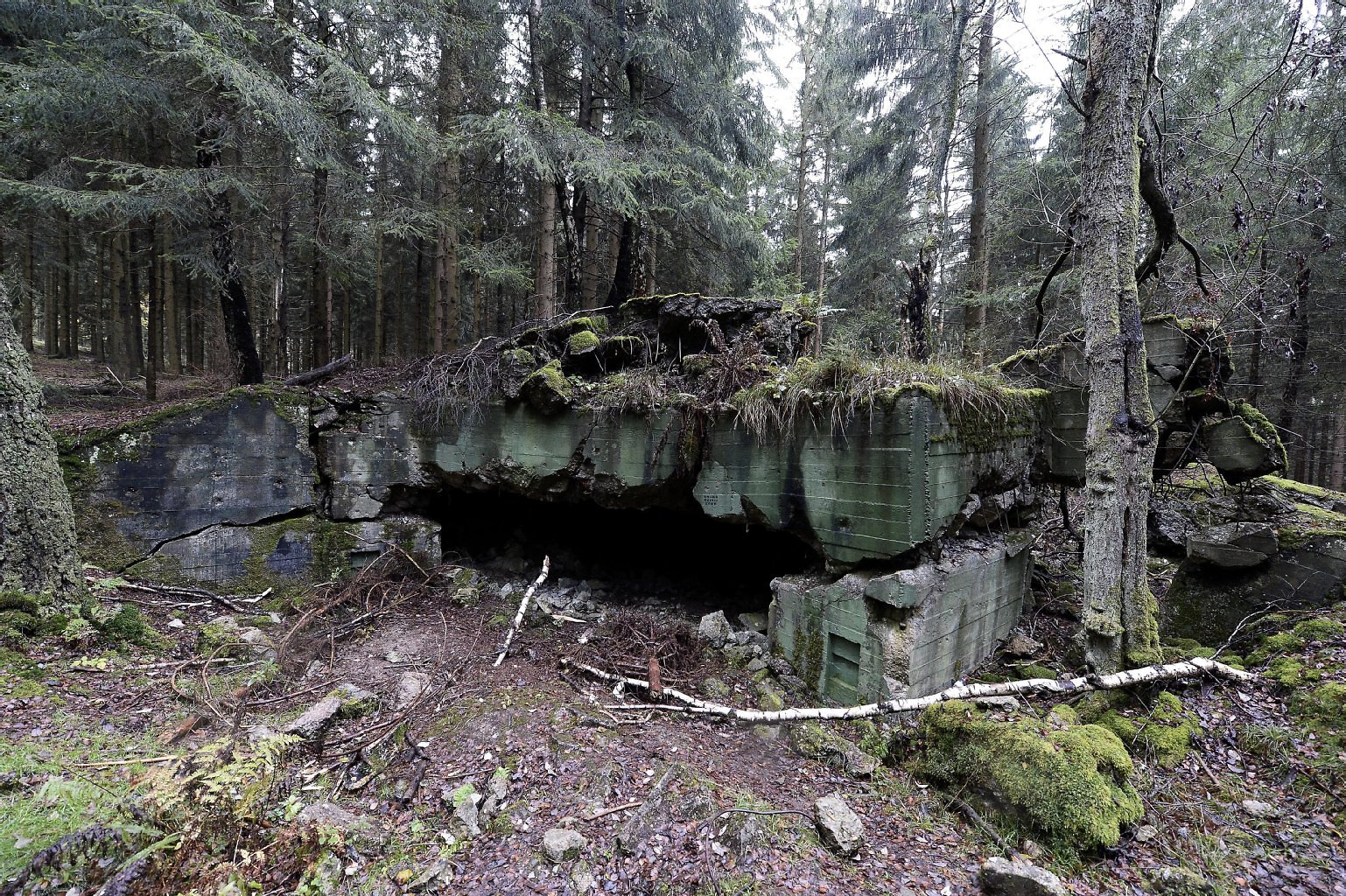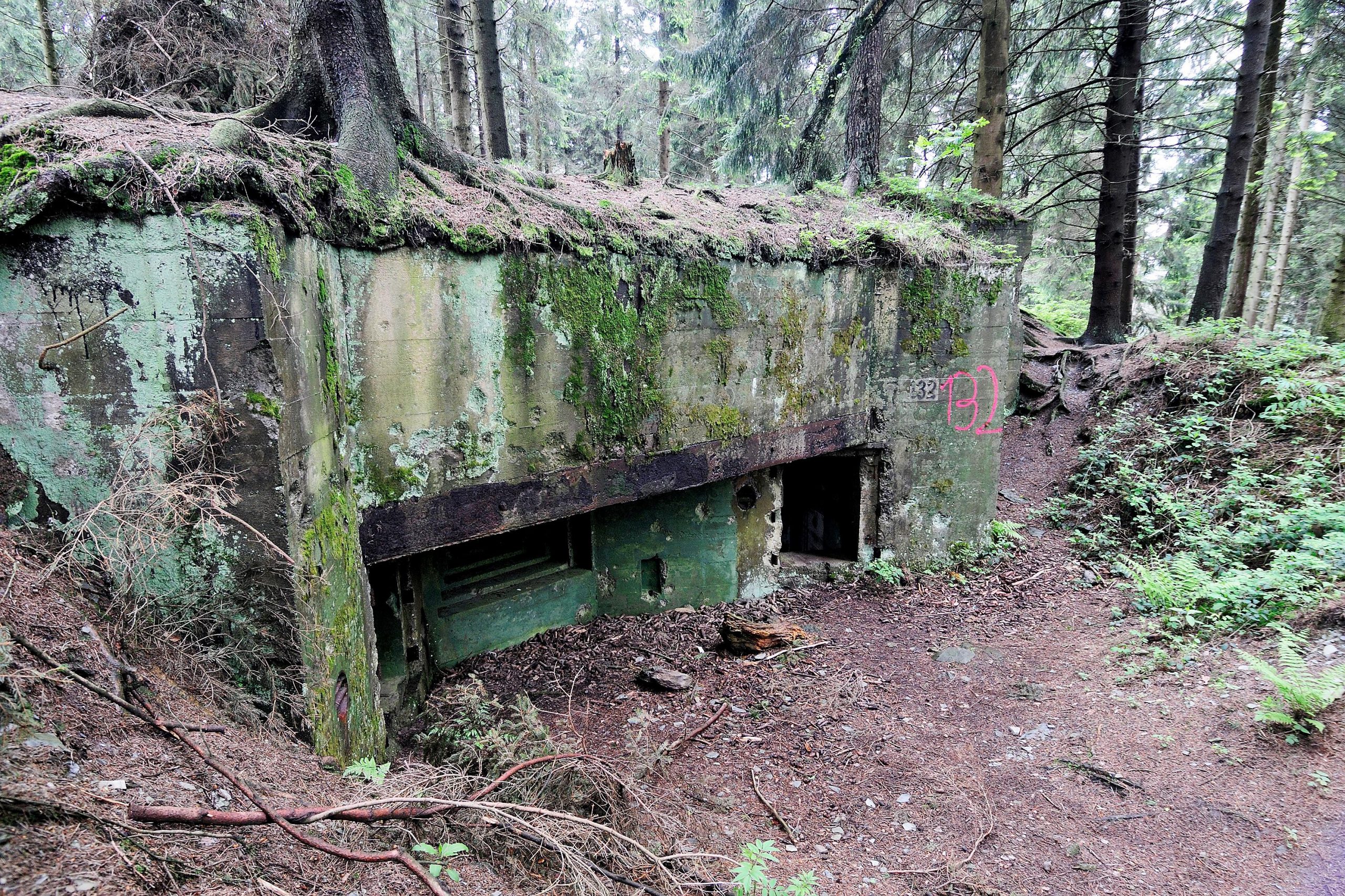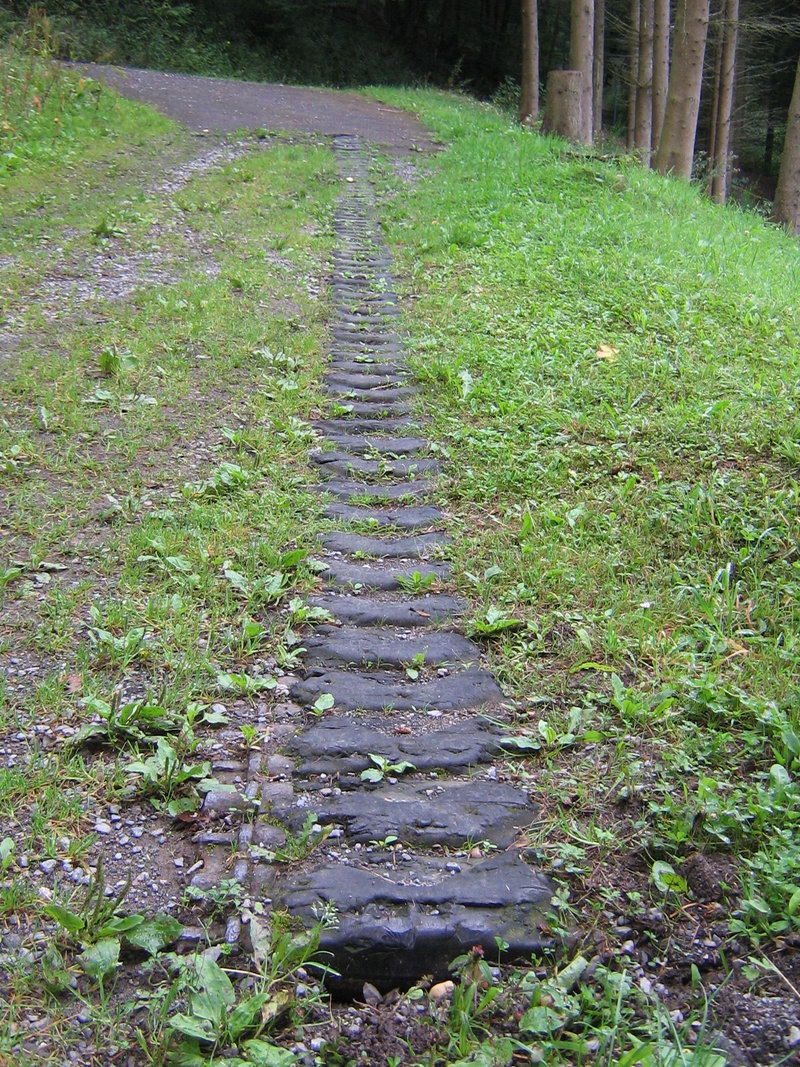When it entered the forest, 1st Army’s VII Corps retained only its advantage in manpower and surrendered all of the other advantages it possessed – armor, artillery, and air power. The roughly 20 to 1 advantage in sheer numbers of tanks and tank destroyers enjoyed by the Americans (Charles B. MacDonald, The Battle of the Hürtgen Forest, 14) was nullified in large part due to the trees, lack of roads, and unfriendly topography. The few roads that existed were mined, blocked, or booby-trapped by the waiting Germans, and armor that entered the forest lost both its ability to maneuver and its advantages of speed over the defending German infantry; the resultant separation from its infantry meant that it was no longer part of a combined arms offensive, and left it vulnerable – even the valuable experience gained in the Normandy hedgerows were no help here, (Sullivan, Armor Against the Huertgen Forest: The Kall Trail and the Battle of Kommerscheidt, 25-26) and American armor suffered heavy casualties in the forest. The Kall Trail – Kommerscheidt debacle suffered by the Lt Flieg and the 707-TB is a shining example of how the forest topography, plus the Germans waiting in clearings near targeted villages, decimated American armor (Astor, The Deadly Forest, World War II (November 2004), 29-30).
Artillery was also of limited use in the forest, as it was restricted, like armor, by the terrain. Mechanized like the armor, it didn’t always enjoy the mobility necessary for its proper deployment and the thick trees interfered with targeting and fire control – American observers couldn’t see targets, and the thick forest became advantageous shrapnel for German artillery (Rush, Hell in Huertgen Forest: The Ordeal and Triumph of an American Infantry Regiment, 22) (the famous tree bursts) and it wasn’t as effective as it had been in the earlier drives across Europe – the Hürtgen Forest action was mostly an infantry engagement (Jay Marquart, Going the Distance with the Old Reliables, World War II (February 2004), 45).
The same tree cover and thick forest, coupled with bad winter weather, grounded aircraft from both armies, and the overwhelming advantage enjoyed by the American air corps (approximately 14.000 Allied planes in the West alone, versus about 4500 total Luftwaffe aircraft in both theaters) were mostly nullified; (Charles B. MacDonald, The Battle of the Hürtgen Forest, 14) on a few occasions air cover was able to assist, such as the P-47 dive-bombing prelude to the 9-ID’s Oct 6 attack and Operation Queen, but the air corps also did not enjoy the successes it had earlier in the year. In committing to this forest campaign, American commanders had surrendered their advantages in men, material, and offensive mechanized superiority – tanks, artillery, and air power – and had begun an infantry offensive against an enemy ensconced in his prepared fortifications, just the type of fighting in which the enemy had proven to be very, very good (Peter R. Mansoor, The G.I. Offensive in Europe: The Triumph of American Infantry Divisions, 1941-1945 (Lawrence: The University Press of Kansas, 1999), 188).
The attack on the Hürtgen Forest became a small war in itself, an infantry-based, WW-1 style battle for the terrain. The battle plan was fairly simple, a microcosm of Eisenhower’s broad front in which units were to push forward with few, and in some cases, no reserves. Starting with the 9-ID’s first action in the forest in September, American units moved abreast of one another leaving their flanks exposed, sometimes for miles (Charles B. MacDonald, The Siegfried Line Campaign, 328-330), unable to offer mutual assistance or supporting attacks.
They were also grossly unprepared to attack prepared fortifications like those of the Siegfried Line, lacking the special equipment (Explosives, Bangalore Torpedoes, Flamethrowers) essential for the reduction of pillboxes (Charles B. MacDonald, The Siegfried Line Campaign, 328-330) and the experience to maximize such equipment’s effectiveness. Only through painful experience did the 9-ID come up with detailed procedures for pillbox destruction – and they still took up valuable time. The 9-ID finished its time in the forest with a frontal assault that nearly finished it (Mansoor, The G.I. Offensive in Europe: The Triumph of American Infantry Divisions, 1941-1945, 187-188), and it was removed from the line in Oct with a net gain of 3000 yards, in exchange for roughly 4500 casualties. Such massive casualties forced removal from the line for much-needed rest and the acquisition of replacements. Early in the battle, Maj Houston of 9-ID had warned that the Roer Rover dams posed a threat to American forces and were extremely important to German resistance; the dams could be opened or destroyed by the Germans, flooding the plain and stopping the American thrust, or be used to flood the plain after the Americans crossed it, cutting them off from any assistance and most likely ensuring their destruction (Charles B. MacDonald, The Battle of the Huertgen Forest, 65).
However, the forest remained the objective and the 28-ID was to proceed in a similar fashion – Gen Norman Cota was given little input on his division’s deployment, tactics, or plan of attack. The differences this time were added mechanized elements and engineer and chemical munitions support for the infantry; the 28-ID advanced alone, with its 109-IR, 110-IR, and 112-IR regiments moving in different directions and unable to support one another. The result was to be expected, with heavy casualties (over 6000) and the loss of huge amounts of valuable (and limited) equipment; the 28-ID, like the 9-ID, was sent into the forest, driven out with crippling losses, and sent to a quiet sector to rest and refit. For a second time, the same basic plan had failed.
By Nov, the Roer River dams had begun to enter the minds of Allied planners, but not their strategy – the forest was still the target and the newest plan was an amplified version of the earlier broad front plans, involving a massive buildup of five infantry divisions and two armored divisions, preceded by the aforementioned Operation Queen – the largest-ever air operation in support of a ground operation. The 4-ID Division took its place in the line, opposing the same German troops in the same fortified positions that had already proven almost invincible. Adding to existing problems was the fact that the 4-ID was starting its offensive in a weakened state, as one of its regiments had already suffered huge casualties in the Hurtgen – its 12-IR had assisted the 28-ID earlier in Nov. So, already weakened, the 4-ID went forth just like its predecessors in the forest – regiments abreast, no reserves, and with gaping holes in its lines, inviting infiltration (Margry, The Battle of the Huertgen Forest, 24) the result was, not surprisingly, the same as enjoyed before – heavy casualties, little gain, and lost time.
The 4-ID, given the same mission in the same terrain in the same weakened state, had become a victim of not only the forest and the German enemy inside it, but also the unimaginative and repetitive planning of the US Army; (Mansoor, The G.I. Offensive in Europe: The Triumph of American Infantry Divisions, 1941-1945, 190) the same tactics that had failed with the 9-ID and the 28-ID before, had also failed with the 4-ID, and it traded 4000 men for three miles of forest (Neillands, The Battle for the Rhine, The Battle of the Bulge and the Ardennes Campaign, 1944, 250-251). For whatever reasons, the US Army commanders still failed to realize that their pinprick attacks, one spread-out division at a time, allowed the Germans to rearrange their forces at will to repulse the (by this time) predictable American assaults (Charles B. MacDonald, The Battle of the Huertgen Forest, 202), and the same fate, via the same method, awaited the next division to visit the area. In its chapter in the Hürtgen forest saga, in late Nov, the 8-ID was tasked with taking the town of Hürtgen itself – which it did, after slogging through the frozen mud and ice of the worst German winter in recent memory, and sustaining over 4000 casualties by Dec 8. The last major action of 1944 in the Forest occurred in the town of Merode, where only 13 men, out of two companies, survived a German counter-attack (Neillands, The Battle for the Rhine, The Battle of the Bulge and the Ardennes Campaign, 1944, 253). The Germans still held Schmidt and its road nexus, part of the forest, and the Roer dams.
Curiously, American interest in actually planning for the capture of the Roer Dams had escalated toward the end of Nov and early Dec (Miller, A Dark and Bloody Ground: The Huertgen Forest and the Roer River Dams, 1944-1945, 180), but the fighting for the Hürtgen Forest was swallowed up by the Ardennes Offensive and lines remained relatively stable during the so-called Battle of the Bulge to the south (Colley, Horror in the Huertgen Forest, 16).
By that time the battle had taken months of valuable time, involved over 120.000 men, and cost the US Army over 33.000 total casualties; the Germans suffered around 28.000, (Margry, The Battle of the Huertgen Forest, 34) and the major Roer River dams, the Schammenauel and the Urft, were still in German hands. The 78-ID finally wrested them from the Germans hands-on on Feb 9, 1945, after the Germans had used them to cause some flooding in the Roer valley (Charles B. MacDonald, Victory in Europe, 1945: The Last Offensive of World War II (Mineola: Dover Publications, 2007), 81-83). The Battle of the Hürtgen Forest had become its war, insulated from the fighting around it, and even from the true objectives it shielded the Roer River dams; the fighting itself sucked in more and more men, and the objective became the territory itself, which ironically held no intrinsic value (Charles B. MacDonald, The Siegfried Line Campaign, 493). It became a self-feeding meat grinder, in which a cycle of attack and counter-attack was perpetuated by replenishment and repeat, with no end in sight save the annihilation of one of the combatants.
A few major factors contributed to this cycle of destruction – the massing of troops at the Siegfried Line caused it to become the sole focus of the early stages of the advance, to the exclusion of anything else (Miller, A Dark and Bloody Ground: The Huertgen Forest and the Roer River Dams, 1944-1945, 204), and the aforementioned lack of creativity on the part of the US Army was bred in part by what soldier and historian Charles B. MacDonald (who fought a couple of miles southward in Belgium, Krinkelt-Rocherath with the 2-ID, there and won a Silver Star and a Purple Heart) calls breakthrough thinking (Charles B. MacDonald, The Battle of the Huertgen Forest, 69, 202), in which commanders were stuck in a sort of rut – the idea that a major push somewhere could lead to a breakthrough, and be exploited for gain.
Unfortunately, tied in with the broad front idea, this caused thrusts and advances, often without reserves or reinforcements, that were too weak to make gains or breakthroughs in any one place. When met with failure, they subscribed to the belief that one more push, one more unit, one more day or week, would succeed – and so, based on that thinking, repeatedly committed troops to the forest the same way each time, without any substantial alteration. The forest became an end in itself, and the repeated attacks caused by this repetitive strategy suffered because the senior Allied commanders were, as a whole, unfamiliar with the battlefield, and often had no idea what was happening in it. In their initial planning, they failed to acknowledge the value of the forest to the defending Germans and the advantages it gave to their outnumbered forces (Charles B. MacDonald, The Battle of the Huertgen Forest, 69, 202) by ignoring the forest topography and making no subsequent attempts to familiarize themselves with it, upper-echelon leaders tasked men and their machines with the impossible (Miller, A Dark and Bloody Ground: The Huertgen Forest and the Roer River Dams, 1944-1945, 207) – such as the lack of recon of the Kall Trail, little more than a goat trail – but labeled a road on maps given to the tank crews that would eventually plunge off of its cliffs, or the small clearings on maps that were miles wide (MacDonald, The Siegfried Line Campaign, 493), causing men to advance long distances on foot exposed to heavy artillery and machine-gun fire.
Rather than reevaluate the planning, leaders at the Army and Corps levels pushed for unrealistic goals and assigned blame to the men asked to do the impossible with virtually nothing (Ambrose, Citizen Soldiers: The U.S. Army from the Normandy Beaches to the Bulge to the Surrender of Germany: June 7, 1944 – May 7, 1945, 169). When lower-level commanders failed in achieving the unlikely, despite often suicidal bravery, they were very often replaced, without regard to their circumstances, (Neillands, The Battle for the Rhine, The Battle of the Bulge and the Ardennes Campaign, 1944, 252) adding to the ever-present and climbing rate of attrition. Such straight-ahead frontal-assault infantry tactics and the constant grinding combat lead to spiraling casualties, and the need for replacement soldiers to replenish the ranks. The German and American replacement systems differed greatly, as the German system was unit-based – units were normally removed from battle and trained as a whole, giving the individual soldier the benefit of older unit members’ experience, and also giving him a sort of home – but the American system was patterned after an assembly line, with each soldier being a replaceable part of a unit, a cog in a machine. The machine was running full-time and required replacements, men and officers, and many units struggled to stay at even minimum strength.






















